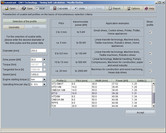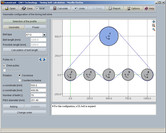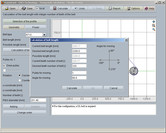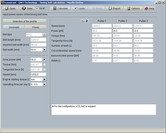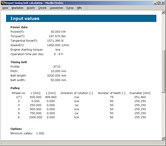Celler Straße 67 - 69
38114 Braunschweig
Germany
Fon: +49 (0) 531-129 399 0
Fax: +49 (0) 531-129 399 29
Mail: info@eassistant.eu
Web: http://www.gwj.de
Timing belts
Features
- Geometry and power calculation of timing belt drives
- Any number of pulleys and tensioners
- Various tooth profiles for rubber and PU belts independently of manufacturers
- Available belt types: AT3, AT3-GEN III, AT5, AT5-GEN III, AT10, AT10-GEN III, AT20, ATP 10, ATP 15, GT2-8MGT, GT2-14MGT, GT3-2MR, GT3-3MR, GT3-5MR, H, HTD3M, HTD5M, HTD8M, HTD14M, HTD20M, L, MXL, OMEGA 3M, OMEGA 5M, OMEGA 8M, OMEGA 14M, RPP8, T2, T2.5, T5, T10, T20, XH, XL
- Power calculation based on „Zahnriemengetriebe - Eigenschaften, Normung Berechnung, Gestaltung“, Nagel, published by Hanser, 2008
- Integrated dimensioning functions (recommendation for possible belt types)
- Consideration of engine starting torque and operating time
- Interactive graphical representation of the timing belt drive
- Dimensioning functions for belt length and number of teeth of the belt
- Determination of the required belt width based on defined minimum safety
- Selection of standard belt widths
- Calculation of transmittable power per pulley and obtained safeties
- Detailed calculation report in HTML and PDF format
Description
The calculation module allows to calculate a complete belt drive. The module supports a graphical and interactive definition of the belt drive.
The module provides a belt selection and a dimensioning function. After the definition of diameter, drive power and speed, a table is displayed showing all possible belt types.
After the selection of the belt type, the number of teeth is determined and the user can add further pulleys or tensioners. A multiple-shaft gear drive with any number of pulleys and tensioners is possible.
When the belt drive is geometrically configured, the user gets the belt length and number of teeth of the belt
Then, the power calculation takes place. Based on the specified minimum safety, the required belt width is determined. The transmittable power per pulley and the obtained safeties are calculated.
The calculations are based on the publication Zahnriemengetriebe - Eigenschaften, Normung, Berechnung, Gestaltung, Nagel, Hanser Verlag 2008. This module was developed in a close cooperation with Mr. Dr. Thomas Nagel (Dresden University of Technology) and offers for the first time a calculation method, independently of a certain manufacturer.

